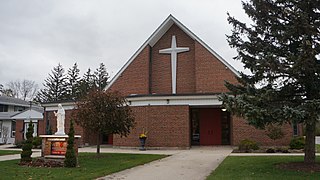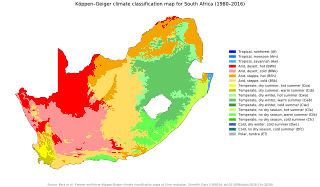
Port Dover is an unincorporated community and former town located in Norfolk County, Ontario, Canada, on the north shore of Lake Erie. It is the site of the recurring Friday the 13th motorcycle rally. Prior to the War of 1812, this community was known as Dover Mills.

Neskantaga First Nation is a remote Oji-Cree First Nation band government in the northern reaches of the Canadian province of Ontario, situated along the shore of Attawapiskat Lake in the District of Kenora.
Pine Grove is a hamlet in Norfolk County, Ontario, Canada, near Delhi. The surrounding terrain of the village is mostly wooded. Pine Grove is very centralized to towns and communities that have necessary services for Pine Grove residents.
The Ontario tobacco belt is the tobacco-growing region located in Norfolk County and eastern Elgin County in Southwestern Ontario, Canada. The region is close to the north shore of Lake Erie, with a moderate climate and sandy, silt-loam soils that are well-suited to a wide variety of crops.

Port Rowan is a town in Norfolk County, Ontario, Canada. It is located on Lake Erie, adjacent to Long Point. The lakeside community has a population of fewer than 1500 people and sports a number of traditional small businesses such as Twin's Ice Cream Parlour, which has been operating in the town for decades.

The geography of Toronto, Ontario, covers an area of 630 km2 (243 sq mi) and is bounded by Lake Ontario to the south; Etobicoke Creek, Eglinton Avenue, and Highway 427 to the west; Steeles Avenue to the north; and the Rouge River and the Scarborough–Pickering Townline to the east. In addition to Etobicoke Creek and the Rouge River, the city is trisected by two minor rivers and their tributaries, the Humber River in the west end and the Don River east of downtown. Both flow southward to Lake Ontario at Humber Bay and Toronto Harbour respectively, which are part of the longer Waterfront, as well as Etobicoke Creek and the Rouge River.

Langton is a small town located in Norfolk County; formerly known as Boughner's Corner.

Walsh is a medium-sized hamlet in Norfolk County, Ontario, Canada.

Nixon is a village in Norfolk County, Ontario, Canada that is almost exclusively residential. This community is east of the town of Delhi, northwest of the town of Simcoe, southwest of the town of Waterford, and northeast of the hamlet of Pinegrove.
Port Ryerse is a fishing hamlet in Norfolk County, Ontario, Canada, southwest of Port Dover. The hamlet is popular with persons from Southwestern Ontario who rent cottages and fish for pleasure during the summer months.
Lynedoch is a village in Norfolk County, Ontario, Canada and was named after Baron Lynedoch who served under Lord Wellington during the War of 1812.

Frogmore, Ontario is a small hamlet that is located northwest of Valley Heights Secondary School. Agriculture is the main industry and commerce is non-existent. There is a concrete products company and a church in the hamlet. It is one of the westernmost communities in Norfolk County, Ontario, Canada.
Clear Creek is a hamlet in southwestern Norfolk County, Ontario, Canada.
Blayney is a hamlet in Norfolk County, Ontario, Canada that is in between Pine Grove and Green's Corners.

The climate of South Africa is determined by South Africa's situation between 22°S and 35°S, in the Southern Hemisphere's subtropical zone, and its location between two oceans, Atlantic and the Indian.
Uruguay has a humid subtropical climate. It is fairly uniform nationwide, since the country is located entirely within the temperate zone. Seasonal variations do exist, but extremes in temperature are rare. As would be expected by its abundance of water, high humidity and fog are common. The absence of mountains and other weather barriers makes all locations vulnerable to high winds and rapid changes in weather as fronts or storms sweep across the country. Weather is sometimes humid.

The history of numerical weather prediction considers how current weather conditions as input into mathematical models of the atmosphere and oceans to predict the weather and future sea state has changed over the years. Though first attempted manually in the 1920s, it was not until the advent of the computer and computer simulation that computation time was reduced to less than the forecast period itself. ENIAC was used to create the first forecasts via computer in 1950, and over the years more powerful computers have been used to increase the size of initial datasets as well as include more complicated versions of the equations of motion. The development of global forecasting models led to the first climate models. The development of limited area (regional) models facilitated advances in forecasting the tracks of tropical cyclone as well as air quality in the 1970s and 1980s.
This is a timeline of the history of Port Dover, Ontario, Canada.
On on April 19–21, 1920, a multi-day severe weather event affected the Southeastern United States. The most intense portion of the outbreak occurred on the morning of April 20. At least seven tornadoes affected the American U.S. states of Mississippi, Alabama, and Tennessee, six of them rated violent F4s on the Fujita scale. The tornado outbreak killed at least 243 people.









